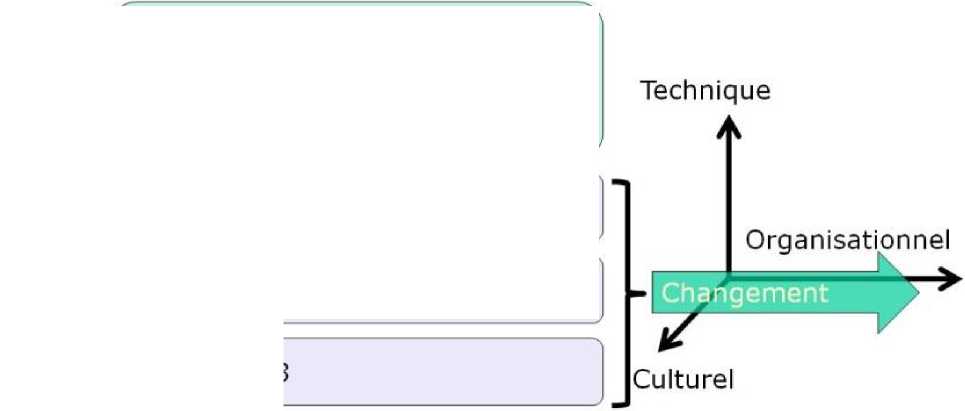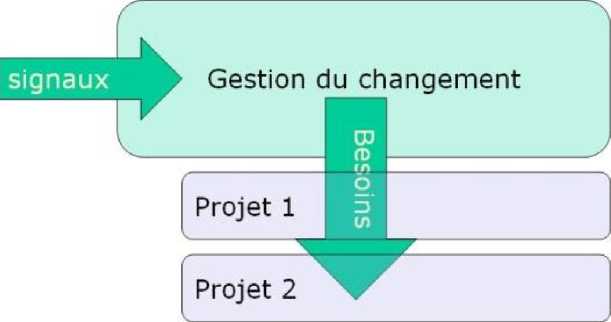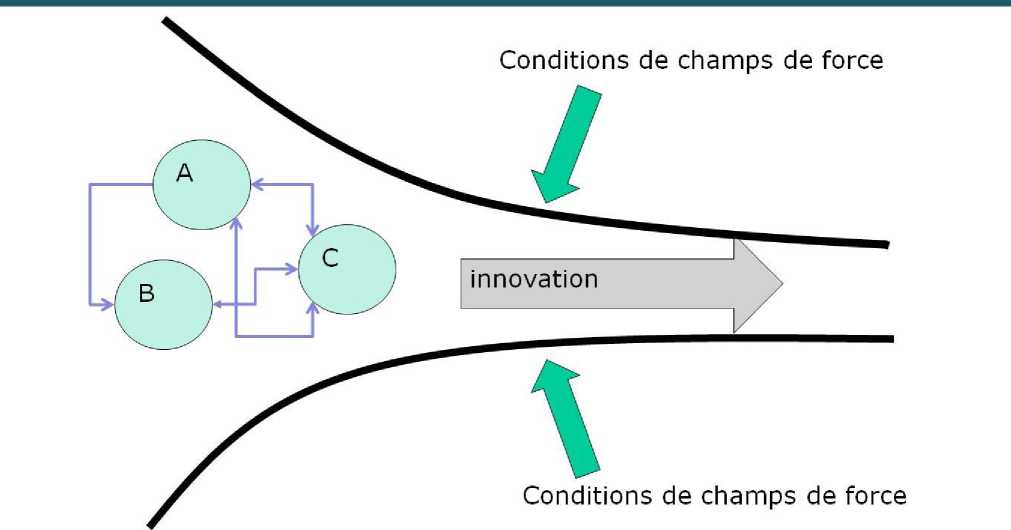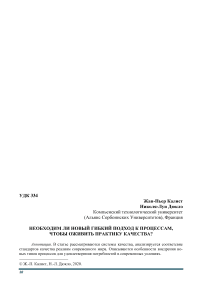Is a new agile approach to processes necessary to revitalize quality practices?
Автор: Caliste Jean-Pierre, Duclos Nicolas-Louis
Журнал: Вестник факультета управления СПбГЭУ @vfu-spgeu
Статья в выпуске: 7, 2020 года.
Бесплатный доступ
Quality systems are often structured in a logic prioritizing quality-conformity, which shows its limits in today's world dominated by the need for agility and innovation. The introduction of new types of processes to capture the needs for change upstream and to foster creative initiatives could be a way of reintegrating quality activities into the core business activities, thus returning them to their original vocation.
Quality, processes, agility, changing needs, signals, creativity, fields of strength
Короткий адрес: https://sciup.org/148319789
IDR: 148319789 | УДК: 334
Текст научной статьи Is a new agile approach to processes necessary to revitalize quality practices?
Quality has lost its role as a school of management by focusing on normative aspects
Until the end of the 1990s, the term quality mainly referred to a logic of Total Quality Management (TQM), i.e. a logic of company operations that concerned everyone, and first and foremost managers, company directors. This vision of "quality for all" was supported by quality circles, participatory approaches and enthusiasm.
Since then, quality has often become synonymous with the activity of specialists far removed from the operational and activity focused on obtaining normative certificates repeatedly. How can we go back to the basics and bring back what we could call the spirit of quality: an entrepreneurial tool, a rational logic whose implementation can both bring added value to the customer and improve profitability?
Various researchers have long shown the demotivating effects of the formalist excesses of quality.
As early as 1997, Haddad, Roberge and Pineault emphasized the "imprecise and multifaceted nature of the notion of quality". They denounce approaches that refer to excellence as "a never-ending process (...) in pursuit of a distant ideal (...)". On the contrary, quality management should be part of a collective problem-solving approach, via "a radical change in organisational culture", and advocates a "multiple reading of quality" as opposed to the normative logic.
Lambelet found in various case studies that "in the minds of some employees (...) everything seems to happen as if the tools of the quality approach were the quality approach" (the message is the medium). "The essential elements are procedures, flow charts, dashboards, indicators and other work instructions (...). This fetishisation of the quality approach's supports leads to losing sight of the meaning of the approach itself", there is "a project's approach is based on its artefacts". Keeping the system in formalism means limiting organizational learning to a single-loop process.
For Boiral, ISO9000 standards often generate "surface" adhesion. He considers (with Cochoy, Garel and Terssac 1998, Seddon 1997, Beattie and Sokhal 1999, Anderson 1999) that "the implementation of these standards is based on a documentary approach and a formalisation of practices that can lead to excessive bureaucratisation or be perceived as an instrument of coercive control". He compares this "kind of perverse effect" to Weber's 1958 notion of the iron cage, which combines rigidities and behavioural control.
Finally, Shiba, Deming Award, has explained in various books the need to train managers well, in particular so that they understand the distinction between CAPD and PDCA; CAPD is used to improve processes in the face of changing objectives; this in fact amounts to giving more attention to the "tailor-made" problem to be improved - and not to a standard considered to be efficient and satisfactory which it would then be sufficient to comply with; more attention is also given, not to the documented standard, but to the actual situation observed.
These various studies show that it is not enough to persevere in efforts to promote standards to finally reap the benefits: it is not enough to (finally) "understand and apply quality well", to persevere in current practices for quality to regain its former splendour.
The concept of agility questions current quality practices
Quality is defined according to ISO9000 (version 2015) as "the ability of a set of intrinsic characteristics of an object to satisfy requirements". This definition naturally refers (but too restrictively) to the product or service and therefore the notion of agility becomes incompatible or even incomprehensible with the very definition of quality.
It is difficult to accept that a steering shaft of a car can be characterized by some form of variability with respect to specifications. Nevertheless, this assertion should be moderated because delayed differentiation or customisation of products and services could be analysed as a form of agility and it would be interesting to develop this point further.
However, in order to broaden the scope of the analysis, in this article, we wish to orient the reflection on processes and their management, in the perspective of "product and service agility".
There is no product without actions and therefore without process, which is reciprocally true, every action has an intentional or unintentional result. The product (or service) is the result of processes that were designed to deliver it. Product and process thus constitute a dialectical couple: one (the process) produces the other (the product/service) and the latter induces the structure (technological, organizational and human) of the former. The choice of products (marketing) has consequences on the production or servicing processes and the more or less smooth running of these processes leads to products or services that more or less meet the specifications and expectations.
This "product/action" approach allows the product or service to be considered as a result, a consequence (a finished product) and the processes as the sole field of intervention (from their design to their implementation). Therefore, to be concerned with the product requires a focus on the processes and not only technically but also and above all from a managerial point of view. In this approach, ensuring compliance with specifications at the product or service level means, beyond compliance with requirements, ensuring the vitality of processes.
New processes can help to capture future changes to facilitate agility of operations
The processes are not all of the same nature and do not all have the same purpose. For the majority of them, the aim is compliance: their operation is designed to reduce deviations from the defined rules as much as possible, their intention is to make dispersion as low as possible (they are based on Lean Six-Sigma, SPC, ... approaches). The questions that then arise are: how could a process designed for a certain type of product (service) produce a new product (service) on its own without external intervention? How could a process-driven organization transform itself without implementing other processes designed to bring about the change(s)?
In order to answer these questions, another type of process would be needed, processes whose purpose is change .
Contrary to the previous ones, their vocation is to produce a "new object" that cannot be the result of existing processes. Their operation is designed to achieve (deploy) the desired change objectives and manage the hazards and opportunities (monitoring, economic intelligence, ...). They rely on more or less innovative projects to create change. They must be thought in terms of: change (objective) and projects (medium). The change processes describe how the listening to signals is carried out and how these signals will be taken into account as input data in order to lead to projects , which are the means of the desired transformation. The figure below illustrates this type of process.

Projet 3
Figure 1. Process with change as its goal: signals, needs and change
ЗсЬёта d'un processus de changement

It is therefore not a question of carrying out projects and accompanying the change induced by these projects. On the contrary, it is a question of identifying the need for change due to the changing environment and determining which projects should be implemented to offer the new "object".
These change processes are thus repositioned, not downstream to "accompany" the change induced by the company's projects, but upstream to make change an intrinsic logic of the processes.
Change is then apprehended in two successive forms: on the one hand, downstream in the traditional form of the Kaïzen, which reincorporates the changes resulting from the Plan-Do-Check-Act of the projects into the Standardize-Do-Check-Act versions of the processes; on the other hand, upstream in the form of processes "of the change itself / to come", which serve to capture the future evolutions that will undoubtedly give rise to new projects and which anticipate the capitalisation of the changes decided by the Kaïzen.
In a way, this amounts to a logic that combines compliance and innovation within the same process dynamic, and thus helps to prevent the drifts observed on the rigidity and inadequacy of processes to business practices. The need to combine innovation and continuous improvement within the continuous quality system is a "what" that has been identified for more than twenty years, but its "how" is still difficult to grasp for many companies.
Where is the place of creativity in relation to the processes of the quality system?
Over the past fifteen years, we have moved from a world where "the bigger eats the smaller" to a world where, moreover, "the faster eats the slower": heightened global competitiveness and the growing complexity of phenomena make creativity and the resulting innovation essential to the long-term survival of the company.
The creativity of a company is of course the result of situations, information and actions of different and multiple natures. In particular, it is nourished by intangible elements that are part of the perceived, everyday life, which are constantly changing and are lost when we try to formalize them. It would therefore be illusory to claim to "set in motion" this creativity, which involves questions of corporate culture and management, which are themselves partially taken into account by other processes.
It is nevertheless possible to set up elements of a quality system that aims to feed on this aspect of the company's performance. This means considering a third type of process: processes whose purpose is creativity.
They are meta-processes, network processes whose purpose is to promote and accompany ideas towards new knowledge or innovation. This new type of process imposes a paradigm shift because, unlike the previous ones, it does not require knowledge and control of the actions specific to them; what counts is mainly the control of the conditions favouring the appearance of chain interactions between actors internal and external to the organization.
The following diagram tries to represent them.

Figure 2. Process whose finality is creativity
This translates into the establishment of conditions (material and immaterial) that create force fields , such as "places and moments" of encounter (e.g. around the coffee machine). The aim is to promote and enhance multidisciplinarity, to allow the idea and accompany it in its development.
These network processes would, as indicated above for the "change" processes, enable us to take better account of the changes underway, to feed the adaptation - the agility - of the quality system processes to the needs of operational staff in the field.
These processes are compatible with the specific functioning of managers' activities, projects, and network connections, which they do not seek to replace but to cooperate with. They could pave the way for a relaxation of quality practices that are too rigid, too far removed from core business activities.
Conclusion: Agility as an opportunity for a managerial renewal of quality?
We have tried to show how the structuring of a quality system based on compliance priorities has led for almost two decades to a rigid vision of quality, which was initially a school of thought and rational management practice.
Although we do not yet have a clear global vision of what "organisational agility" would be, we are convinced that in the coming years companies will see the spread of various agile practices (named after the 2002 Agilo Manifesto), resulting from IT methods for product and service design projects, increase. These agile approaches have made it possible to question obsolete ways of seeing things, such as the hyper-determinism of planning and control, the over-formalization of relations between customers and suppliers, or the opposition of specifications to the continuous pressure of a changing environment.
In our opinion, there is a risk that quality-conformity will be permanently relegated to a minor role if it does not focus on the need for agility, whether in the design of products and services, management support or innovation in business processes.
Experimenting with new types of processes, such as change processes (to capture the signals upstream of change and prepare projects) and creativity support processes (to support the initiatives of managers and project leaders) could open up new possibilities. It can be seen as a kind of "double loop" of process management, repositioned on the founding values of quality management.
The introduction of these "agile logic" processes for change and agility can undoubtedly be a historic opportunity for quality systems to return to the centre of the game, providing partial support for operational management and innovation activities, particularly on the aspects of accompanying organisational change and preparing projects.
It's time for quality to move out of a world focused on standardization and control and return to its world of origin: the world of customer satisfaction and the creation of added value for operational staff.
Список литературы Is a new agile approach to processes necessary to revitalize quality practices?
- I. Aronov and L. Stern, "ISO 9000 standards in life", Russian cartoon book, KDU Pub-lishing, Moscow, 2008
- J.-P. Caliste and C. Bourret " Contribution to a topological process analysis. From con-formity to agility. ", commission of the congress QUALITA 2013, in Compiègne
- C. Cham, "Should quality be brought back to the forefront? "article on the Qualita 2013 congress published in the UTC's Interactions magazine, April 2013
- J.-L. Coujard, "La dérive des cadres normatifs: des standards d'interopérabilité au formatage des représentations", Ecole des Mines de Nancy, Jean-louis.coujard@mines.inpl-nancy.fr, 2005
- V. Cristallini, "Managerial Skill. Réalisme et courage en management ", Ed. Ems - Management et Société, Paris, 2009
- François Jullien, La philosophie inquiée par la pensée chinoise, 2009
- N-L. Duclos, "Quality: Cult or Culture? ", 6-page article, 2013
- Didier Lebouc, developing an innovative product with agile methods, Eyrolles, Editions d'Organisation 2011
- D. Lozeau, "La démarche qualité: de l'engisement d'une technique à l'enracinement d'un archetype", 15th AIMS Conference, Normandy Seine Valley, 2014
- F. Mispelblom Beyer, "Beyond quality. Démarches qualité, conditions de travail et politiques du bonheur ", Ed. Syros, Paris, 1999


